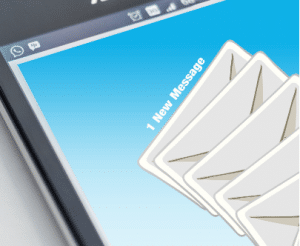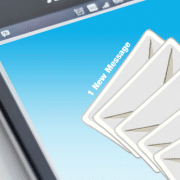Email Etiquette: A Must Know
With the digital age upon us, now more than ever, it is easy to get mixed up between the various modes of communication that we use in our everyday life. At any given time you can find a person texting a friend, emailing a boss, and drafting a paper all at the same time! In a world now built around multitasking, it’s extremely important to be able to differentiate the appropriate means of communicating through email instead of text. Keep reading to find out some easy and appropriate ways to communicate professionally…
Greeting:
As does any other card you would write, an email requires a standard greeting. While a text often gets straight to the point, when emailing it is important to be cognizant of your short “intro”. Providing a kind hello to any recipient of an email you write will immediately set a professional, kind, and caring tone to your message.
Examples of appropriate greetings: 
- Dear [Name],
- Hi [Name],
- Hello [Name],
- Hi Team,
- Greetings Everyone,
Provide Background, Be Clear:
Again, text messages often work to incorporate the least words possible to get the job done. Emails are super different! While a text might ask, “Did you get the job done?” An email should provide background information instead of assuming that the subject is clear. For example, an email inquiring about that same question should say, “Hi ___, I want to recap on the project we discussed last Friday regarding ____. Were you able to complete your task as discussed? Please let me know at your earliest convenience. Thank you.” That way, you will decrease the number of emails sent back and forth in order to achieve clarification, and the email will appear thought out and formal.
Extra tip: It is always a good idea to include dates, numbers, and names when referencing projects, meetings, or deadlines. The more complete information you provide, and the fewer questions you leave the recipient with, the greater answer you will receive!
Clarity Continued:
Avoid any and all “texting lingo” in professional emails. This includes but is not limited to: “U”, “Urs”, “Gtg”, “Brb”, “Cya”, “Cuz”, “Y”, “R”, “K”, “Kk”.

Always End With a Thank You:
In the same way that a proper greeting sets a kind tone at the beginning of an email, a quick wrap-up thank you comment will leave your reader in a pleasant mood (which will also increase the odds of a positive response!). Even if you are not asking for a favor, still make sure to thank any person for taking the time to read your email.
Quick, easy thank you’s:
- Thank you for your time.
- Thank you for your patience.
- Thank you for understanding.
- Thank you for helping/your assistance.
- Thank you in advance, or In advance, thank you.
- Thank you for your time, please let me know if I can help you in any way.
- Thank you for your time, please let me know if you have any questions.
- Thank you and have a great weekend.
- Thank you and have a great day.
- Thank you for your consideration.
Polite Signature:
Just like you greeted your recipient, say goodbye as well! While signing just your name is not necessarily “wrong”, adding a proper ending creates a lasting impression. Choose any of the following and you’ll be all set!
- Best,
- Best wishes,
- Best regards,
- Sincerely,
- Thank you,
- With gratitude,
- Kind regards,
Last note: Sign your full name and include any work information, job title, work or cell number, or any other important contact information. It is quick and super easy to create a signature from any email provider! Set yours up today if you do not have one already.
Now that you’re prepared to send some great emails, feel free to try one out at [email protected].
Additionally, we welcome emails following your application to any of our current open jobs!



